Car colors have historically been dictated by current events, the national mood, technology and cultural influences, resulting in decades of brilliant shades. More recent times, however, have seen muted tones become the most popular car colors.
A look back in history shows us how we got to the common car colors we have today.
The History of Car Paint Begins
Any customer can have a car painted any color that he wants, so long as it is black.
Henry Ford
Automobiles in the late 1800s and early 1900s were essentially motorized carriages, and so they were painted just like their transportation predecessors. This meant using oil-based paint applied by hand. Most cars were painted black because the color was durable, cheap and dried quickly.
But there were problems with both the color and the application of early car paint. Even though it provided a luxurious, brilliant finish, painting a car took weeks to complete. In addition, the black paint would often fade or yellow. Since the paint had no binding agent, when discoloration occurred, the car had to be repainted, which cost money.
Despite Henry Ford’s famous words, not all Model Ts were painted black. In fact, from 1908 to 1914, the car came in several different colors. But when Ford implemented the assembly line manufacturing process, he needed a paint that dried quickly, thus the switch to black.

Duco Paint
A major milestone in the evolution of car paint history occurred in the 1920s when the DuPont company developed a new type of automotive coating. DuPont scientists modified nitrocellulose, a substance used to make explosives and motion picture film, to create a low-viscosity lacquer that could be sprayed onto automobiles. This new paint, dubbed Duco, had numerous benefits over previous versions of car paint.
According to the Science History Institute, “Traditional varnishes chipped, cracked, crazed and faded; Duco lacquer was almost invincible. It tolerated air, sun, rain, mud, dampness, heat, cold, salt water, bacteria, perspiration, dirt, soaps and detergents. Most low-end finishes came in few colors, while Duco made available a rainbow of hues.”
General Motors was the first manufacturer to adopt Duco (at the time, GM and DuPont were under the same leadership). GM’s Oakland Motor Car Company painted its cars with two different shades of blue and a red or orange racing stripe, and debuted them at the 1923 New York Auto Show. The colors were an immediate hit with the public and by the mid-1920s all GM divisions were using Duco.
Car Color in the Roaring ’20s
The economic boom of the 1920s saw the rise of automobile ownership, which invited a broader spectrum of car colors and a variety in shades. Although the Great Depression reduced the abundance of colorful vehicles, it didn’t deter the evolution of car paint.
In the 1930s, newly created metallic paint gave vehicles an improved sheen. (Automobiles were also becoming less box-like, and the new paint helped enhance the curved forms.) Metallic paint was first made using real fish scales. It took 40,000 herring to make one kilo of paint, according to Consumer Reports. Less expensive versions of the paint used aluminum flakes instead.
Post-War Car Paint
The end of World War II saw a boom in consumption and style, with automobiles at the forefront. By this time nearly all the large automakers had color advisory panels that surveyed consumers’ tastes and studied color trends in fashion and culture. Cars became flashier with features like tail fins, curved windshields and, of course, bright colors. In addition to the copious amounts of chrome, automobiles were painted in all shades of the rainbow. Two-tone arrangements, where a car’s body and roof were painted different colors, also became popular.
The color trend continued well into the 1960s with the emergence of muscle cars. These cars have always been more about performance than pragmatism, lending themselves as better canvases for brightly colored paints.
The color trend came to a quick halt during the fuel shortage of the 1970s. During this time, car owners became more concerned with fuel efficiency and car color took a back seat. Earth tones like brown, tan and dark green became popular.
What Is the Most Popular Car Color Today?
The current color situation on United States’ roadways is not very colorful at all. “If you drove down an American street and looked only at the new vehicles, you might be forgiven for thinking you’re in a black-and-white movie,” described Volkswagen.
No one can argue with the truth. A recent study on popular car colors by iSeeCars found that 25.8% of the 6.1 millions vehicles analyzed were white and 22.3% were black. Even more sobering if you’re a fan of colorful hues is that the next two most popular paint colors, at 18.4% and 12.1%, were gray and silver. This isn’t an anomaly: These have been the most common car colors for a decade.
Why Are Muted Tones the Most Popular Car Colors?
It wasn’t too long ago, from the 1950s through the 1970s, when U.S. roadways were filled with automobiles of all shades of the color spectrum. So why the change? “Color is always shifting, and our color perception is always evolving depending on what we see, what we observe and what we live with,” said Volkswagen Senior Color and Trim Designer Jung Lim “Limmy” Park. “Color preferences really reflect the unique social and cultural trends and even geography [of a region].”
There are a number of social and cultural theories as to the prevalence of more somber car colors in America. We are currently living through the second significant recession in about a decade. During times of economic uncertainty people tend to be conservative with their money. And while a different color on your car may not increase its cost, the mindset of keeping things simple and avoiding anything flashy has been known to carry over. A similar trend occurred following the Great Depression nearly a century ago.
As for cultural influences, there are some that suggest our car color choices are defined by our obsession with technology. Apple is the world’s most valuable company and its muted-color logo is recognized around the world. “Prior to Apple, white was associated with things like refrigerators or the tiles in your bathroom,” Sandy McGill, chief designer for BMW DesignWorks told Motoramic.com. “Apple made white valuable.”
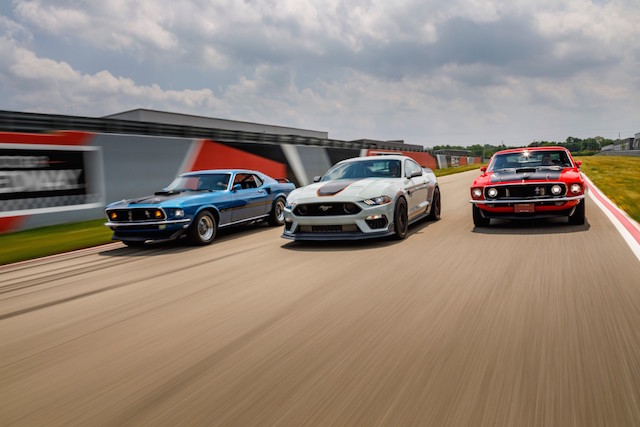
The Right Car Color for the Right Car
There’s also always been a belief that certain colors are right for certain cars. Pickup trucks are more utilitarian and don’t need a neon coating. Luxury sports car, meanwhile, are made to get people’s attention and are likely a more acceptable place for a bright-yellow coat of paint.
But sports cars haven’t been immune to the colorless trend. The Ford Mustang is a perfect example. In 1967, the muscle car was available nine shades of blue and two shades of pink. In the 1970s, brown was consistently among the top three most popular Mustang colors, but hasn’t been offered since 2000. Black, on the other hand, didn’t break into the top three until 1994 but has remained there ever since.
What Will Be the Most Popular Car Colors Moving Forward?
No one can predict the future, but we do know that trends change. As long as the demand for new colors is there, the supply will come with it.
There’s another reason to be hopeful for more vivid roadways. We view so much of our lives through the sharp, brightly colored images on our electric devices that it wouldn’t be surprising to see other shades pop up on cars in the near future. “We are all so impacted by our digital life through the pandemic, and the colors you mainly see are [on] your screen more than actual physical objects,” said Volkswagen’s Park. “The future is getting colorful, for sure.”
What color is your car? What colors would you like to see brought back? Let us know in the comments below.
If you want to try cars in all the colors of the rainbow, you can use your AAA membership to get a discount on Hertz car rentals.
Get more automotive history.
252 Thoughts on “Why Are Popular Car Colors So Boring? A Brief History of Car Paint”
Leave A Comment
Comments are subject to moderation and may or may not be published at the editor’s discretion. Only comments that are relevant to the article and add value to the Your AAA community will be considered. Comments may be edited for clarity and length.




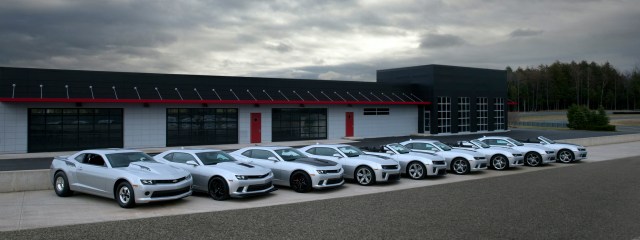

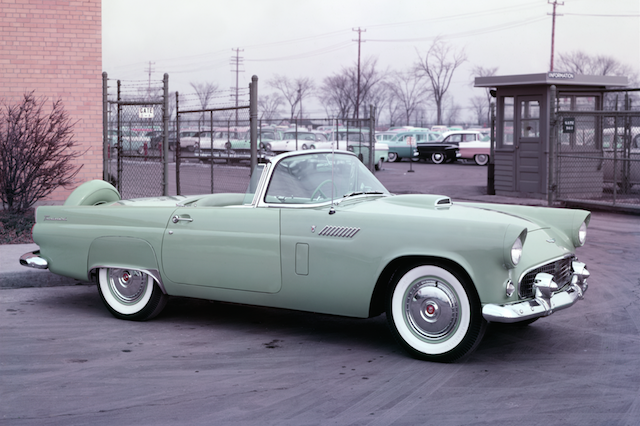
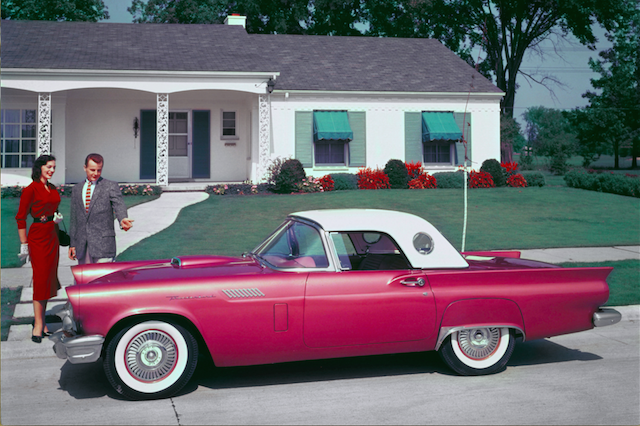
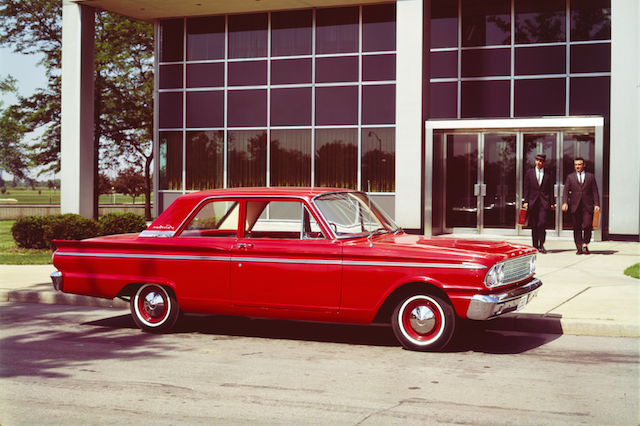
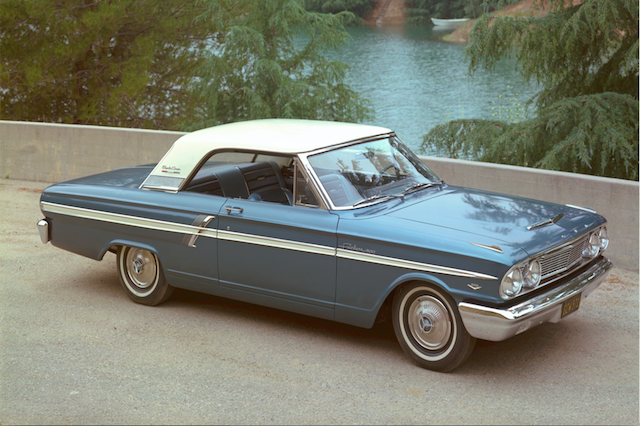
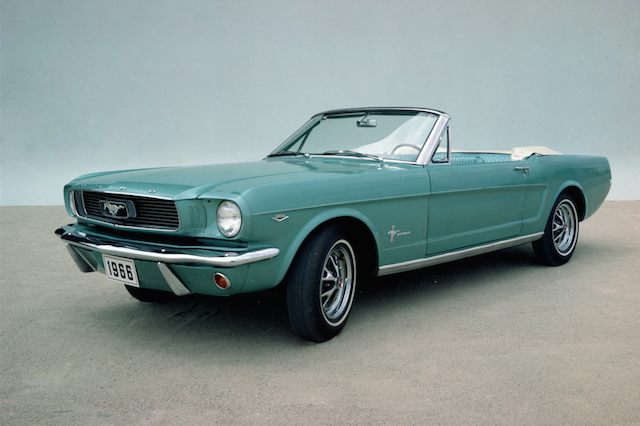
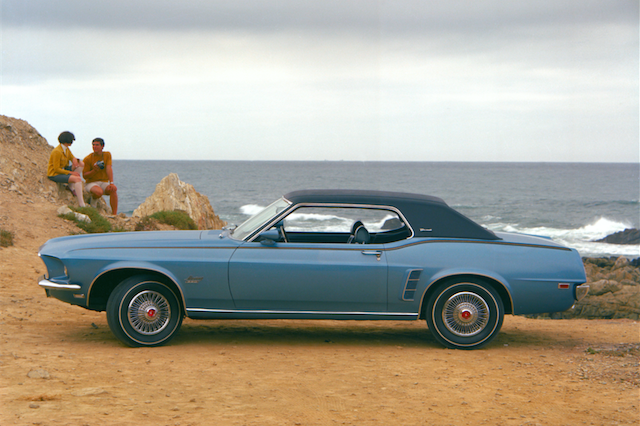





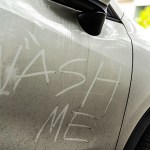



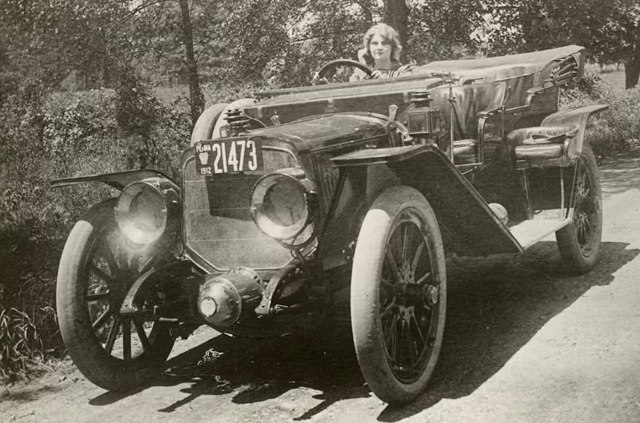

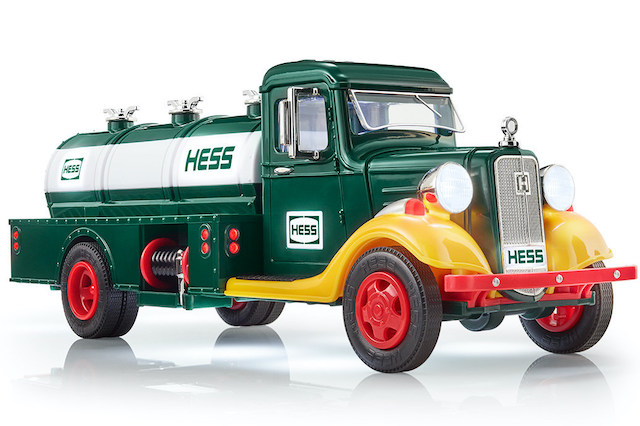

I have two green cars, a kiwi green Ford Escape hybrid and a citron green Chevrolet Volt. I love my green cars! When checking out the new cars, I haven’t seen any with a green option.
I’m surprised that little mention has been made of the fact that most colors today are metallic, even black and white. I’m tired of it. When I visited the Nethercut Car Museum near Los Angeles, I was impressed by all the rich non-metallic colors of yesteryear. In the late sixties and early seventies, Mercedes convertibles came in a rich brown, dark green or dark blue, all with matching tops. Combined with a saddle brown leather interior, they were absolutely beautiful.
Would love to see bright yellows and orange/reds and turquoises. Car colors of the late 60’s and early 70’s were all stand outs for me.
I love my Inferno Red (that’s what they call it) Kia Soul. Very bright – usually easy to find in a parking lot. There was one time that Iparked next to an identical one. And once I went to the wrong car – another one was parked an aisle away from mie.
I received an email from my daughter yesterday informing me that her local Lexus dealer has “found” a bright blue SUV with a humongous sunroof only 400 hundred miles away. You would have thought she had won the lottery. But I understand her excitement because she had absolutely refused to purchase a black, white, or gray/silver car. Too booring! Too common. Doesn’t fit her personality. Unfortunately, when my husband and I got our last car (Volvo S60) the only colors available for us? Black, white, or gray. We chose gray but never again.
My favorite color is red, but when I go to the dealership and select the model I want and point at the red color in the brochure, I’m told, “We don’t sell those in this part of the country.” To which, I respond, “Then I won’t buy from you.”
Why would they offer it if you can’t have it?
My first “adult” car was a lime-green metallic, VW Sirocco. Loved it! Then a bright red VW Corrado. Then a metallic teal BMW. Fun cars deserve lively colors. Mainstream car designs seem more conservative now, but I guess that’s why we’re inundated with conservative colors. I’m waiting for a trend toward practical but exciting new designs, hoping for some more exciting colors. In the meantime, my red hair is the only color seen while driving my white car.
My wife had HER black Hyundai Tiberon for 18 years. When it suddenly and finally had to be replaced, I was in charge of the decision regarding the next purchase. The available colors on short notice for the car I wanted – a Hyundai Veloster – were red or black. Without hesitation, I chose red because of the higher visibility factor, especially at night or in the rain. I felt better being a little more colofull on the road in a low height vehicle amongst so many larger…. things.
I drive a black but in the sun it looks like blue/green metalic toyota camry. I always wanted a black car and a camry which I have. Before that car, I had a light blue Toyota Matrix which I had for 15 years. I keep my cars for a very long time. My friend had a Kia Soul cream color which I loved. She traded it in and got a dark blue which she doesn’t really like. I like the lime green color.
I would absolutely love a “liquid copper” SUV, a copper color that isn’t very orangey or too pinky, but I only found it on an Infiniti Q30 which was too small for me. I love warm colors, and all the colors are cool these days, except for really bright oranges. I’d love to see some fresh shades in the vein of cream, champagne, gold, electrum, copper, and bronze. I really wanted a Honda CRV because I liked the lines, the shape of the rear tail lights, the upward swoop of the chrome trim on the rear windows, and most importantly, the “wood” trim on the dashboard and the doors. So retro and cool. Only cool colors were available, so I got Sonic Gray, which is a color changer depending on the light–sometimes slate blue, sometimes flat gray. I like that it’s unique, but not that it’s not warm.
I love the color light blue – as my 1973 Dodge Dart was. It was visible at night, and pretty in the daylight. in the 21st century, the only blue available was a rich dark blue. But at least it was blue. People liked that dark color, however now it is very popular with several car makers – Honda, Toyota, to name a few. I had to put decals on the car so I could spot it in a sea of dark blue cars!! I also hate that the Honda’s interior has the same choice Ford had – any color as long as it is black. I hate black interior – hard to find things that fall on the floor, and hot in the summer. But Hondas (2020 – civic, 2018 and 2016 Accord, had great rating – so safely first, convenience a distance second.
I love the Apex Blue Pearl of my Acura RDX A-Spec. Not too dark and not too light with a nice sparkle. The black gloss trim gives it a sporty look but doesn’t scream out hey here I am at night.
Blues ,greens, yellows and reds.
My 2013 Chevy Spark is Jalapeño Metallic (bright green). The kids I work with call it my “Granny Smith Apple Car”. I love it!
I often use my Mojito Green Jeep as a location beacon for people so they can find me in a parking lot. It works every time.
My Brother has a 1996 Stingray…the most gorgeous shade of lipstick lavender. Have not seen that color anywhere on any other vehicle. Just stunning.
We had the chance to buy a Sunset colored Ford Escape several years ago and opted for gray instead, but always regretted the choice. Fast forward a few more years and while we were between cars and on a months long road trip, our son-in-law called with a car he thought we might like. Turns out it was a Sunset Escape and we jumped at it, sight unseen. Now we are looking for a new car and, while we really don’t like the current car, we still love the color. Makes it hard to commit to a 2021 anything in all shades of black, white or gray.
When I was rear-ended in 2019, my beautiful blue manual transmission Saturn Ion Quad was totaled. I was crushed. I loved that car. I went looking for another manual transmission and they were very hard to find. I told every dealer we visited if I was going to pay all that money for a new car, I wanted a manual transmission in blue. They all looked at me and said I wasn’t going to find one. Finally ended up at a Honda Dealership and told them the same thing. They said it was available in the Accord but might be hard to find. They checked inventory and found one 200 miles away. Needless to say they shipped it to the dealer and it was love at first sight.
I LOVE Color. I drive an Audi Q3 and it’s FIRE ENGINE RED!
Funny I should see this article after just yesterday I noticed how blah and bland the roads look these days. Black. Gray. White. BOOOORRRING!
Before that, I drove a 650 Bimmer in sky blue with a champagne interior. Love me my cars.
Bring back color! Bring back FUN! Bring back individuality!
I currently have a white car, but would love to see some of the pastel colors brought back like candlelight yellow, celery color, or some nice shade of brown, or blue. So tired of looking at the basic grey, black, and white. We need some COLOR in our world!!
Hi, this may be interesting you: Why Are Popular Car Colors So Boring? A Brief History of Car Paint! This is the link: https://magazine.northeast.aaa.com/daily/life/cars-trucks/what-are-most-popular-car-colors/
Interesting article, and having learned a bit about Car Colors over the years, I have a couple of points to add. First, when it comes to color there is more “science “behind the manufacturer’s choice than mentioned, vs. The People’s choice.
As I learned from “Consumer Reports” issue from circa 1984/5, the safest colors are “the citrus colors”: ORANGE, LEMON and LIME. Highest visibility. Think back to the TransAm, and the VW Beatle. You were less likely to be hit by a speedingTransAm if it was bright ORANGE than by its alternative, Badass BLACK, because you can see ORANGE coming.
Similar for the YELLOW VW Bug. You were less likely to hit that little thing if it was bright YELLOW because, though it was small, it was bright enough to see in any type of conditions.
RED cars win more trophies at the Classic Car Shows than any other color, probably because of daylight visibility and the vitality the color projects. And, RED cars also get stopped by Police more often than others, probably because those who choose RED may have racier, more aggressive personalities and may tend to be heavier on the gas pedal.
However, The human eye is blind to RED at night, and the darker the RED, the harder to see. Black Cherry is all but impossible to see, even if it s right in front if you, if the lights are not on, and if there are no environmental lights illuminating it. Seriously, you could come right up behind one and drive right into it, if the parking lights or brake lights were not on. Boadside would be a challenge, and that’s why chrome strips and white wall tires were such a good idea for safety purposes, as were 2-tone paint jobs. Fire engines have traditionally been bright RED, because you can see them coming during the day, and the color signals “emergency”. However, mit so good, even as big as they are, at night without a lot of bells and whistles to warn you. Some towns have caught on the RED AT NIGHT factor and have switched to a kind of DayGlo reflective, light YELLOW/GREEN/CHARTREUSE. A good idea for day or night, but it doesn’t seem to have caught on as well as it probably should have.
MIDNIGHT BLUE is just about as dangerous as BLACK CHERRY for visibility. A lof of Police Cruisers have been MIDNIGHT BLUE in the past. They often don’t want to be seen sneaking up on you at night, so that’s helpful. But, the low visibility factor makes MIDNIGHT BLUE accident prone, too, and that is the reason why it is Law, now, that squad cars must be 2-tone BLACK & WHITE–or WHITE w/red stripes, for example–in most places.
WHITE has its obvious advantages at night, and disadvantages in the snow. So-so or good during the daytime.
Now, The Muted Colors. TAN, BEIGE, LIGHT BLUE, SEAFOAM GREEN… so-so day and night. But, the SILVER & GREY have got to be a he very worst for safety. If you stand in a large parking lot, and with “soft eyes”, scan the entire lot, it is easy to see how those colors blend in with the horizon, especially at dawn and dusk and on a cloudy day, or in the rain. CHARCOAL GREY just becomes one with the grey sky and pavement during dusk or dawn, and especially in the rain.
One year, in the 90’s, I got a brochure from a minivan manufacturer which displayed all the color choices for that year. I was stunned. Every single choice was a low visibility/high accident shade of paint. Do I think those colors were chosen by The People and popular for any reason having to do with The Buyers’ personalities or for any deep, psychological reasons? No. I think they were deliberately chosen for their short life spans! Crack up your car, what do you do? Buy a new one. Just as with SILVER/GREY, the most popular colors for the last decade, as the article states Think about why that might be, aside from the claim that people like them. No, Capitalism is not known for its sense of altruism.
Sent from my Galaxy